6. KIDS (1995)
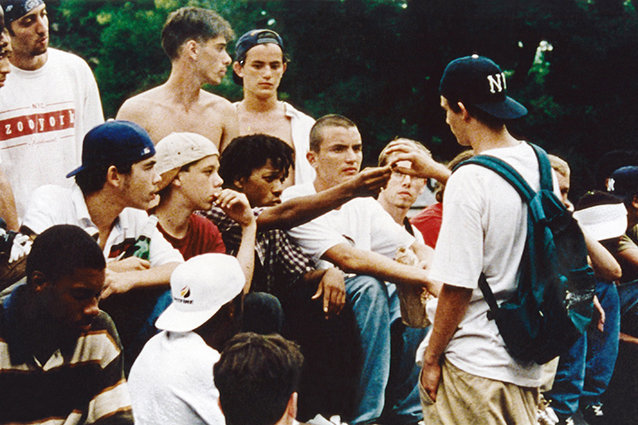
This film shocked the moral majority in the 1995 with its frank depiction of teenage sexual mores, and perhaps of graver concern—its depiction of teenage nihilism. Regularly discussed on alarmist newscasts at the time, the film has gone on to outlive its initial controversy as a result of its explicit narrative and excellent cinematography by Larry Clark, who’d built a reputation as a photographer of sexualized young people in books like Tulsa.
Not only did it launch the careers of Korine, Rosario Dawson, and Chloe Sevigny, all of whom were amateurs when the film was shot, but it now serves as a vital document of 90s New York skate culture.
The film’s origins have been well-documented. Though Clark was in his 50s at the time, he was hanging around with a bunch of NY skaters, and endeared himself to Korine by giving him a skateboard after Korine’s broke. Korine had been studying film at NYU, and knew the basics of three-act structure, so when Clark asked him about collaborating on a film Korine was able to punch out a script in a matter of a few days.
5. Trash Humpers (2009)
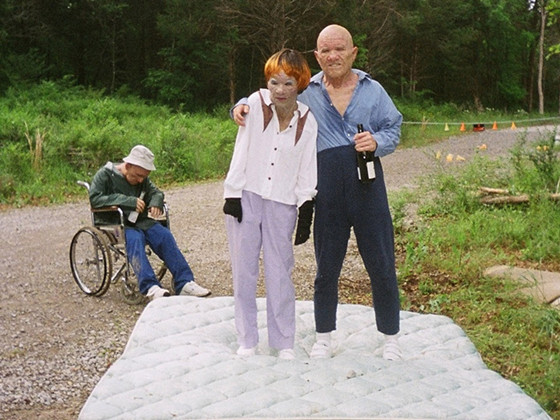
All that signifies the Harmony Korine experience seems to culminate in this misanthropic artefact: lowlifes running wild, profligate drinking and debauchery, skulls getting cracked open, and of course the humping of a few inanimate objects along the way. You can almost envision the studio bigwigs swooning over the elevator pitch.
Shot using damaged VHS tapes, this is the story of three elderly reprobates and the drunken, libidinous scourge they inflict upon Nashville, Tennessee. Using realistic masks years before Bad Grandpa, there’s something truly disturbing about seeing what looks like an 80-year-old man viciously thrusting his crotch against a garbage can for minutes at a time. As in Gummo, a child is featured who seems to exude pure evil. The unpleasant little tyke smashes a doll with a hammer and repeats, “I told ya I’d kill it.”
At feature length, it’s natural that there’d be more nonsense refrains and they’d be used with greater frequency. “Make it, make it, don’t fake it,” is kind of weird the first time you here it, kind of annoying by the third or fourth time, and downright mesmerizing by the dozenth time. Every once in a while this is replaced with a “Suck it, suck it, don’t fuck it,” just to keep audiences guessing.
Those looking for thematic structure perceive the Humpers as a Marxist response to bourgeoisie living. They are both a reflection of and result of societal gluttony. Korine is heard singing murder-themed nursery rhymes throughout the film as the unseen Humper behind the camcorder, but he emerges to give the following speech, “Sometimes when I drive through these streets at night, I can smell the pain of all these people. I can smell how these people are just trapped in their lives. They don’t see much. Sometimes they get lost in it…I never quite understand why people would choose to live that way. That’s a stupid way to live. A stupid, stupid, stupid way to live.”
4. Blood of Havana (2009)
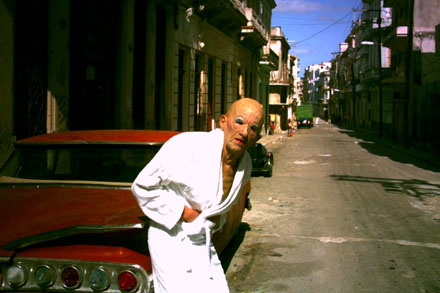
In this two-minute short found as an extra on the Trash Humpers dvd, one of the Trash Humpers has “done chewed on that barley” and wound up in Havana, Cuba, a place that is “born of a great socialist dream.” If Trash Humpers is a refutation of capitalist systems, then this may be a celebration of a socialist one.
As he walks by classic cars and hairless dogs, the Trash Humper seems redeemed, saying “I could feel the wind at my back. I felt good about things.” The people of Havana recognize that the Humper comes from a “great family of murderers” and yet they are tolerant of him.
As usual Korine manages to blend in vérité elements, showing the curious responses of Havana residents to the freakish man wandering around in a bathrobe. Even if by the end the Humper is back to his old ways and talking about blood running in the streets, on the whole the short offers a hopeful antidote to the dire outlook presented in the feature film.
3. Spring Breakers (2012)

A cast of young Disney stars making a film with a controversial auteur, many slack-jawed Chads and Staceys who confused it for standard teen multiplex fare, and at least a few thousand old creeps in raincoats helped Spring Breakers gross over $25 million and become Korine’s biggest financial success to date.
The hot neon color palate, and the even hotter young actresses, would put the most populist music video director to shame, but don’t think Korine traded in his defiant ethos when he got a budget. Ultimately the entire film is a savage deconstruction of the very lifestyle it might be expected to celebrate.
Touches of absurdity include the (arrestingly beautiful) version of Britney Spear’s Everytime, James Franco’s celebrated performance that allegedly channels the rapper RiffRaff, and of course wrestler Jeff Jarrett as an evangelical preacher.
While the first 40-minutes is largely an exercise in style, by the end Korine has put together his most linear, and ergo his most accessible film to date. That makes Spring Breakers the best bet for introducing normie friends to the director’s work. The problem will be finding a second film to follow it up with that won’t scare them off.
Maybe ask them beforehand, “What would be more offensive to your sensibilities: a man pimping out his cognitively-impaired sister, or a character who goes by the name of “Lady Trash Humper” providing a detailed tutorial on how to put a razor blade in an apple?”
2. Gummo (1997)
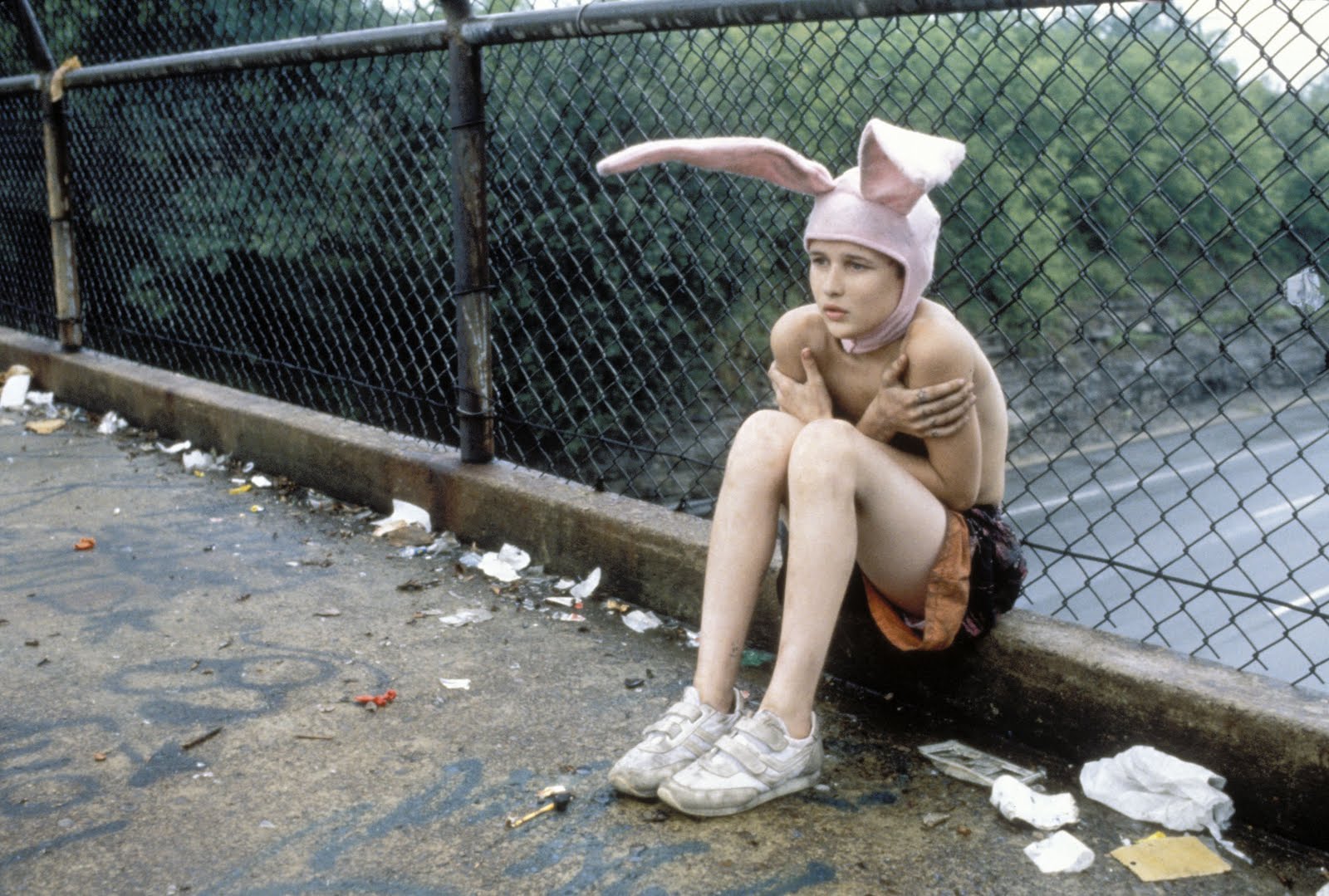
Despite exceedingly edgy content and a grungy low-fi aesthetic, Korine’s debut feature is elevated by a sneaky sophistication that Korine employs to create the most affecting film possible. While Gummo sometimes looks as though a glue-sniffing hillbilly got his hands on a camcorder, the cinematography is the work of the great Jean-Yves Escoffier, who has lensed films by Leos Carax and Gus Vant Sant.
At just 24-year-old, Korine, whose father was a documentary filmmaker, also possesses an intuitive grasp of cinematic syntax. Scenes syncopated with classic songs like Buddy Holly’s Everyday or Roy Orbison’s Crying would be pure Oscar bait if they weren’t surrounded by so much mucky truth.
To wallow in that mire for a moment, Korine’s debut is concerned with The Aesthetics of Degradation, to steal a phrase from Adrian Nathan West’s treatise on pornography. With its motley assemblage of dead cats, a gay black dwarf amputee, a real-life glue sniffer, a prostitute with Down’s syndrome, a sassy albino obsessed with Patrick Swayze, real fistfights, and real fights against kitchen chairs, Gummo managed to stupefy that most complacent and jaded of audiences: late 90s independent film buffs.
1. Julien Donkey-Boy (1997)
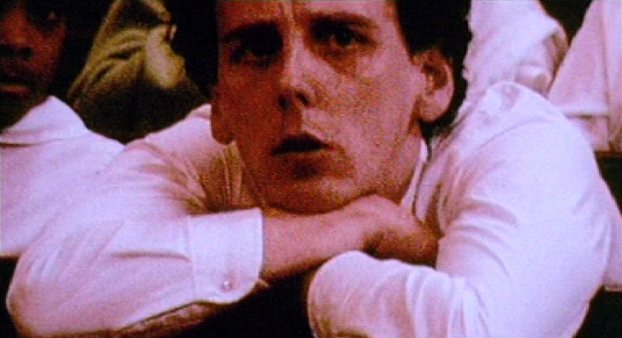
Shot by Anthony Dod Mantle on digital video, rarely has so much warmth been wrought from the medium. High-contrast, slow motion images set against New Jersey parkland call to mind D.W. Griffith’s quote that, “Cinema is the wind in the trees.”
And yet with a 26% rating on Rotten Tomatoes, and reviews like “Julien Donkey-Boy really is an excuse to let Korine go nuts with his jerky video camera as he stitches together a series of completely unrelated and utterly vapid sequences,” or, “This movie could make you physically ill,” it’s fair to say that Korine’s deepest and most sophisticated work has not been wholly appreciated.
While all of Korine’s films are visually ambitious, and always affecting on a visceral level, this is the first (and, really, only) time he committed to telling a story with emotional depth. Based on Korine’s experiences with his own schizophrenic uncle, Ewan Bremner is featured in a fully-committed performance as the eponymous Julien.
This isn’t I am Sam; this is pure mile-a-minute word salad. Bremner’s performance is so genuine that he seamlessly blends in with real people in a disability day group. This may strike some viewers as exploitive, but Korine’s intent is never to laugh at these people, but to celebrate their individuality.
This is never more evident than in the session where the actor and stand-up Victor Varnado suddenly unleashes the now-legendary “Black albino/straight from Alabama” freestyle and the other participants, including Bremner, join in on the fly. For all the bleakness of Korine’s early films, these little moments that blend artifice and reality often border on the sublime.
Despite not strictly meeting all of the standards, the film earned a Dogme 95 certificate. In a confession, Korine admitted that his then-girlfriend Chloe Sevigny was not actually pregnant and wore a prosthetic. He claimed to have made every possible effort to impregnate her himself, but sadly, the possibility that he was “shooting blanks” had hampered the integrity of the film.
Even with the prosthetic, Sevigny delivers one of her finest performances as Julien’s sister. In one truly heart-rending scene, she pretends to be Julien’s deceased mother over the phone, reminding him to brush his teeth and not to listen to the voices in his head.
And while the film is full of such inspired performances, let’s not forget Werner Herzog’s first major English-language film role as Julien’s disinterested father: a gas-mask wearing, cough syrup-addicted ghoul. In one particularly memorable scene Herzog interrupts Julien’s ramblings about “midnight chaos, eternity chaos, morning chaos,” with a not-entirely accurate description of a scene from Dirty Harry, and then says, “That’s good stuff. I truly like that. I don’t like the artsy fartsy thing.”
Author Bio: Mike Sauve has written about film for The National Post, Variety and Exclaim! Magazine. His novel The Wraith of Skrellman is narrated by a precocious, teenaged “upstart Jodorowsky scholar.” His novel The Apocalypse of Lloyd involves an apocalypse that is a Stanley Kubrick production featuring Dennis Hopper, strangely enough. His most recent book is the non-fiction investigation Who Authored the John Titor Legend? Visit his website at www.mikesauve.com or reach him on Twitter @MPSauve.